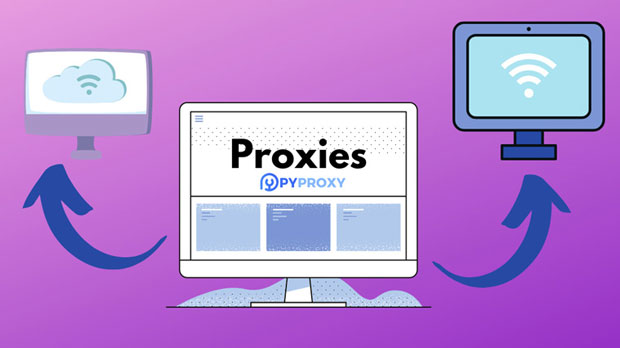When selecting a proxy service, whether it's a DuckDuckGo Proxy or PYPROXY, it is essential to consider several key performance metrics to ensure the best fit for your specific needs. Proxy solutions come with varying degrees of speed, security, anonymity, reliability, and scalability. These metrics play a crucial role in the effectiveness of the proxy, especially when used for high-demand tasks like web scraping, data collection, or bypassing geographical restrictions. By carefully evaluating these factors, you can select a proxy solution that provides optimal performance and meets your business or personal requirements. This article will delve into the essential performance indicators to consider when selecting the ideal proxy service. 1. Speed and LatencyOne of the most important performance metrics to evaluate when choosing a proxy service is speed and latency. Speed directly influences how quickly data is transferred between your system and the target website, which is critical for tasks like browsing or web scraping. Latency, on the other hand, refers to the time it takes for data to travel between your device and the proxy server. Lower latency ensures quicker response times and smoother performance.To evaluate speed and latency, consider the geographical location of the proxy servers, as this can significantly impact connection times. Proxies that are closer to your target websites generally provide faster response times. Additionally, a high-quality proxy service will offer consistent speed, even during periods of high demand.2. Anonymity and SecurityAnonymity and security are crucial considerations when selecting a proxy solution, especially if you are dealing with sensitive data or engaging in activities that require privacy protection. A reliable proxy should mask your IP address, preventing third parties from tracking your online activities. This is particularly important for maintaining anonymity when conducting web scraping or accessing region-locked content.Furthermore, the proxy should provide a secure connection, protecting your data from potential cyber threats. The use of encryption protocols ensures that data sent through the proxy remains confidential. Look for proxies that support robust security features, such as SSL/TLS encryption and support for secure HTTP (HTTPS) connections.3. Reliability and UptimeReliability and uptime are essential metrics for any proxy service. A proxy that frequently goes offline or experiences connection disruptions can cause delays and errors in your tasks, whether you are scraping websites, accessing restricted content, or simply browsing. High uptime guarantees that the proxy server will remain available when you need it, minimizing downtime and preventing interruptions.To assess the reliability of a proxy, you can look for service providers that offer Service Level Agreements (SLAs) that guarantee a specific uptime percentage. Ideally, the proxy should offer 99.9% uptime or higher, ensuring that you have consistent access to the proxy without frequent interruptions.4. Scalability and BandwidthScalability and bandwidth are critical when considering proxy services for large-scale tasks such as data scraping, market research, or managing multiple concurrent connections. A scalable proxy solution allows you to expand your usage as your needs grow, without compromising performance. Whether you need a small number of proxies or a large-scale proxy network, the solution should be able to accommodate your requirements without slowing down or running into performance bottlenecks.Bandwidth, which refers to the volume of data the proxy can handle at any given time, is another key consideration. A high bandwidth capacity ensures that the proxy can handle large amounts of data transfer, especially important for high-traffic applications or large-scale data collection operations. Be sure to assess the available bandwidth for both downloading and uploading data to ensure smooth operations.5. Geo-location SupportFor specific tasks such as bypassing regional restrictions or conducting location-based web scraping, geo-location support is a crucial performance metric. A proxy service that offers a wide range of geographic locations gives you the flexibility to access content or services restricted to certain regions. The ability to select proxies from multiple countries and cities allows you to access websites as if you were located in those regions.When considering geo-location support, ensure that the proxy service offers a sufficient number of servers in the desired locations. Additionally, consider the geographical distribution of proxy servers. Proxies that are spread across multiple regions ensure that you can choose the best server for your specific needs, reducing latency and improving performance.6. Compatibility and IntegrationAnother important metric to consider is how well the proxy service integrates with your existing systems and applications. Whether you are using the proxy for web scraping, managing ad campaigns, or protecting your identity online, the solution should seamlessly work with your tools and software. Compatibility with different operating systems, browsers, and API interfaces is essential for ensuring smooth operations.Additionally, the proxy service should offer easy integration with automation tools and scripts. This is particularly important for users who need to scale their operations and require smooth integration with third-party applications. Ensuring that the proxy service supports key integration protocols such as SOCKS5, HTTP, and HTTPS can make a significant difference in the flexibility and effectiveness of your proxy setup.7. Cost and Value for MoneyThe cost of a proxy solution is another vital consideration, but it should not be the only determining factor. While it may be tempting to choose a low-cost solution, it’s important to weigh the price against the performance features offered. A cheaper proxy may lack essential capabilities, such as fast speed, reliable uptime, or sufficient geo-location support, ultimately costing you more in the long run due to inefficiencies or downtime.When evaluating cost, look for proxy services that offer clear and transparent pricing, with no hidden fees or unexpected charges. Additionally, consider the long-term value for money based on the performance metrics most important for your tasks. Some proxy services may offer tiered pricing models, allowing you to select a plan that suits your specific needs and budget.8. Customer Support and ServiceCustomer support and service play an essential role in ensuring the reliability of your proxy service. In case of any technical issues, performance problems, or general inquiries, having access to responsive and knowledgeable customer support is invaluable. Ensure that the proxy service offers 24/7 customer support, ideally via multiple channels such as live chat, email, and phone.A high-quality proxy provider will also offer comprehensive documentation and troubleshooting resources, helping you resolve issues independently if necessary. Look for services that offer proactive support, ensuring that any potential issues are addressed before they impact your operations.When choosing a proxy solution, it’s crucial to assess several performance metrics to ensure that the service meets your needs and expectations. Speed, latency, anonymity, security, reliability, scalability, and geo-location support all play vital roles in the overall effectiveness of the proxy. Additionally, cost, compatibility, and customer support should also factor into your decision-making process. By carefully evaluating these key metrics, you can select a proxy service that offers the best balance of performance, reliability, and value for your specific requirements.
Apr 16, 2025
![arrow]()




























































